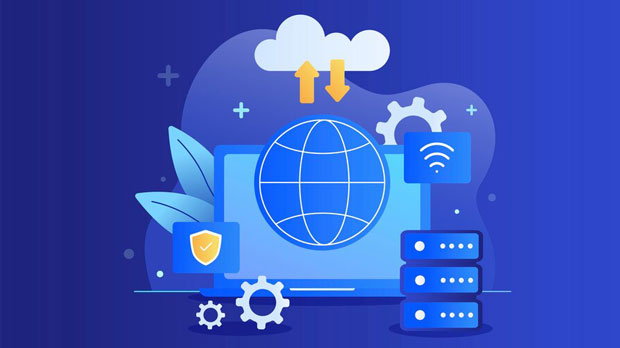PYPROXY offers a powerful solution in the form of Rotating ISP Proxies, which are designed to enhance web scraping, data extraction, and other activities that require high anonymity and performance. These proxies are highly reliable and provide users with access to rotating IPs, making them highly useful for businesses and individuals involved in digital marketing, SEO, or competitive analysis. But what protocols do PyProxy's Rotating ISP Proxies support? Understanding the protocols they support is crucial in determining whether these proxies align with the specific needs of a project. Understanding ISP ProxiesBefore diving into the specific protocols, it is important to understand what ISP proxies are. ISP proxies are a type of proxy server provided by Internet Service Providers (ISPs). These proxies route user traffic through an intermediary server, allowing users to mask their IP addresses and access the internet with enhanced privacy. They are widely used for web scraping, online marketing, accessing geo-restricted content, and maintaining anonymity.Rotating ISP Proxies, as offered by PyProxy, provide an additional layer of functionality by automatically switching the IP address at regular intervals. This helps in circumventing IP-based blocking and is especially valuable for large-scale scraping tasks, where multiple requests to the same website can lead to IP bans.Protocols Supported by PyProxy's Rotating ISP ProxiesPyProxy's Rotating ISP Proxies are highly versatile and support a variety of protocols that make them suitable for different use cases. The main protocols supported are HTTP, HTTPS, and SOCKS5. Below, we will examine each of these in detail:1. HTTP and HTTPS ProtocolsThe HTTP and HTTPS protocols are the backbone of the modern web. These protocols are used for web browsing, data transfer, and online communication. When using PyProxy's Rotating ISP Proxies, both HTTP and HTTPS protocols are supported, which makes them ideal for web scraping, browsing, and content access.- HTTP Protocol: The Hypertext Transfer Protocol (HTTP) is the most widely used protocol for accessing websites. It is designed for unencrypted communication and is used primarily for browsing, data fetching, and sending requests to web servers. Using HTTP proxies for scraping and accessing web pages ensures that the proxy server can interact with websites in a manner that is consistent with normal web browsing.- HTTPS Protocol: The Hypertext Transfer Protocol Secure (HTTPS) is an extension of HTTP that uses encryption (SSL/TLS) to secure the communication between the client and the server. HTTPS is vital for accessing websites that require secure data transmission, such as online banking, e-commerce, and social media sites. Since HTTPS protects data from being intercepted, it is crucial for any operation that involves sensitive or private data.2. SOCKS5 ProtocolSOCKS5 (Socket Secure 5) is another popular protocol supported by PyProxy’s Rotating ISP Proxies. Unlike HTTP/HTTPS, which are primarily designed for web browsing, SOCKS5 is a more flexible protocol that can be used for a wider range of internet traffic. It is capable of handling various types of traffic, including FTP, email, and peer-to-peer communication. sock s5 proxies are highly preferred by users who need to bypass firewalls, access restricted websites, or maintain a high level of anonymity.- Features of SOCKS5 Protocol: - Anonymity: SOCKS5 proxies offer a high level of anonymity because they do not alter or inspect the data being sent. This makes them less detectable and more secure for users. - Protocol Versatility: SOCKS5 can support a wider variety of traffic, including different types of web protocols, making it more versatile than HTTP or HTTPS proxies. - Bypassing Geoblocks and Firewalls: SOCKS5 is widely used for bypassing geolocation restrictions and accessing blocked content.3. Benefits of Rotating ISP Proxies with Multiple Protocol SupportThe combination of rotating IP addresses and multi-protocol support makes PyProxy's ISP proxies highly advantageous for various online activities. Here are some key benefits of using rotating ISP proxies with support for multiple protocols:- Enhanced Privacy and Anonymity: The rotating IP feature ensures that each request comes from a different IP address, helping users maintain anonymity while scraping or browsing. This is especially important when dealing with websites that track IP addresses and use them to prevent automated actions.- Bypassing IP Bans and Geo-Restrictions: Many websites implement IP bans to prevent scraping and other automated activities. By rotating the IP addresses, PyProxy's ISP proxies can help users avoid such bans. Additionally, the multi-protocol support allows users to bypass geographic restrictions by accessing content from different locations around the world.- Improved Performance and Scalability: Rotating ISP proxies can be used at scale to scrape large volumes of data or access a high number of web pages in a short time. The support for different protocols ensures that users can select the most suitable method for their specific tasks, whether they need basic HTTP connections or more secure HTTPS or SOCKS5 proxies.- Reduced Risk of Detection: The use of rotating IPs in combination with different protocols reduces the chances of detection by website security systems. Websites often track repeated requests from the same IP, and rotating the IPs minimizes the likelihood of triggering anti-bot measures.4. Use Cases for PyProxy’s Rotating ISP ProxiesUnderstanding the protocols supported by PyProxy's Rotating ISP Proxies can help users identify their potential use cases. Below are some scenarios where these proxies can be highly beneficial:- Web Scraping and Data Collection: Businesses and marketers often use proxies to gather large amounts of data from websites. The rotating nature of PyProxy’s ISP proxies, coupled with their support for HTTP, HTTPS, and SOCKS5, ensures smooth data extraction with minimal risk of IP blocking.- SEO Monitoring and Competitor Analysis: SEO professionals and businesses use proxies to monitor search engine rankings, analyze competitors, and collect data from search engines without revealing their IP addresses. With the multi-protocol support, they can access different search engines, social media platforms, and more.- Bypassing Geo-Restrictions: Users who need to access geo-restricted content, such as streaming services, can leverage the rotating ISP proxies with SOCKS5 support to bypass region-based restrictions.- Secure Transactions and Online Privacy: Individuals involved in e-commerce, online banking, or sensitive business operations can use the HTTPS protocol in combination with rotating IPs to ensure that their transactions remain secure and their identity is protected.In conclusion, PyProxy’s Rotating ISP Proxies support a variety of important protocols, including HTTP, HTTPS, and SOCKS5, making them an ideal choice for businesses and individuals looking to enhance their online privacy, security, and performance. The rotating IP functionality combined with multi-protocol support offers flexibility, scalability, and the ability to bypass various online restrictions. Whether you’re involved in web scraping, SEO, or accessing geo-restricted content, these proxies provide a powerful tool to improve your online experience while maintaining a high level of anonymity and security.
Aug 25, 2025



































































